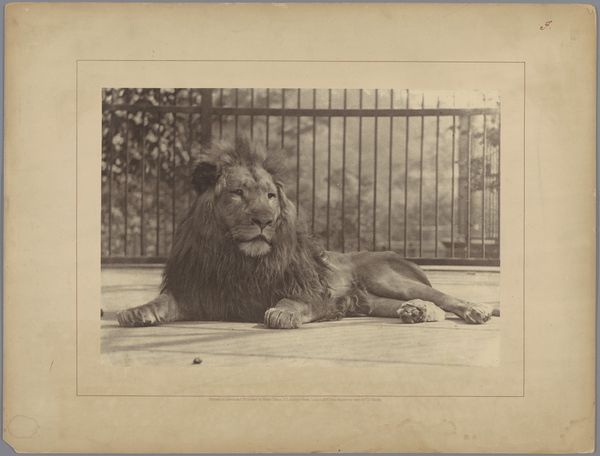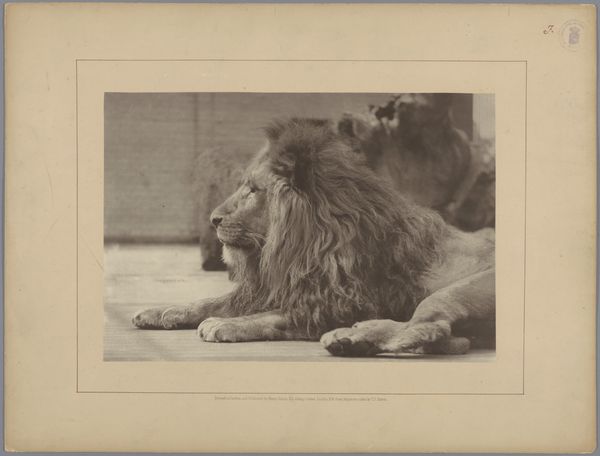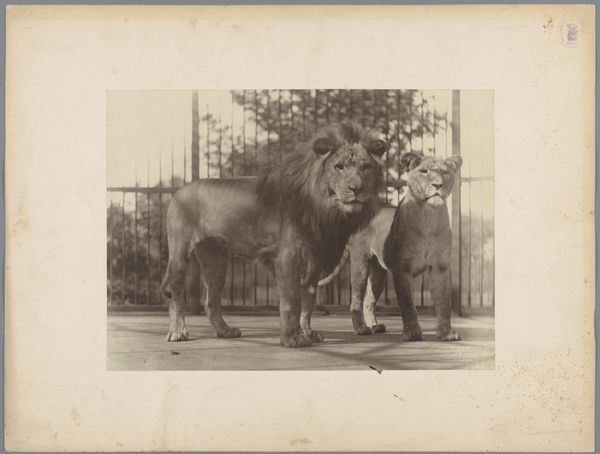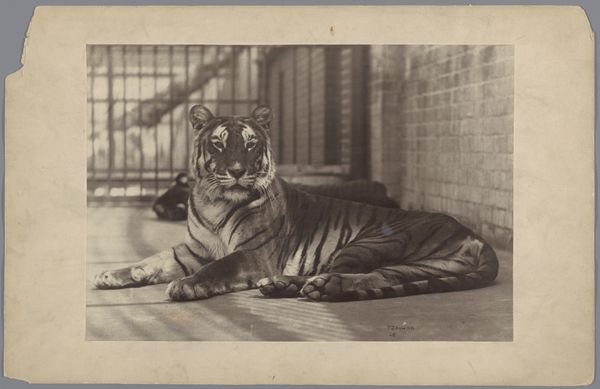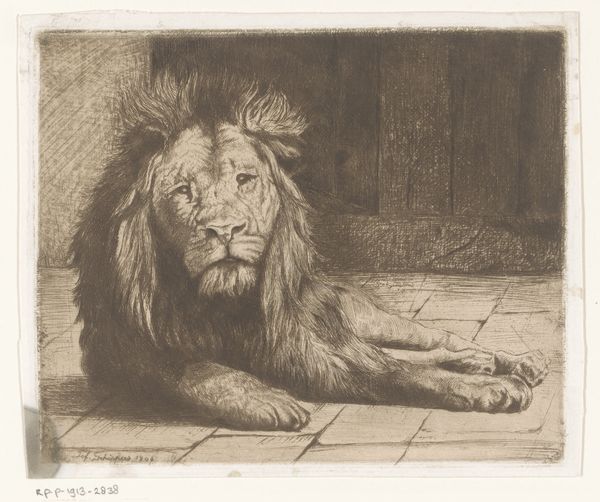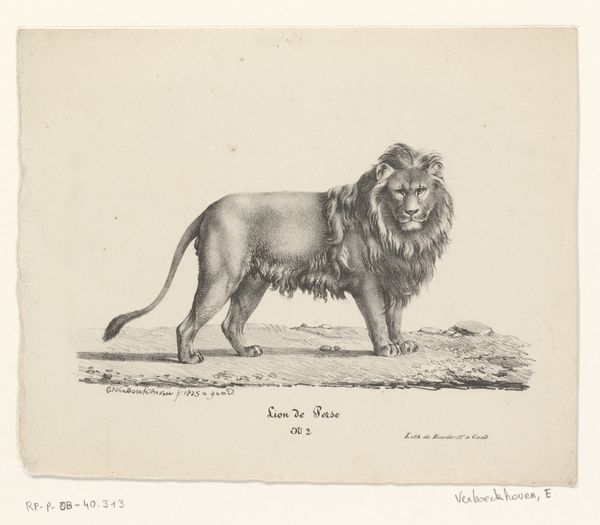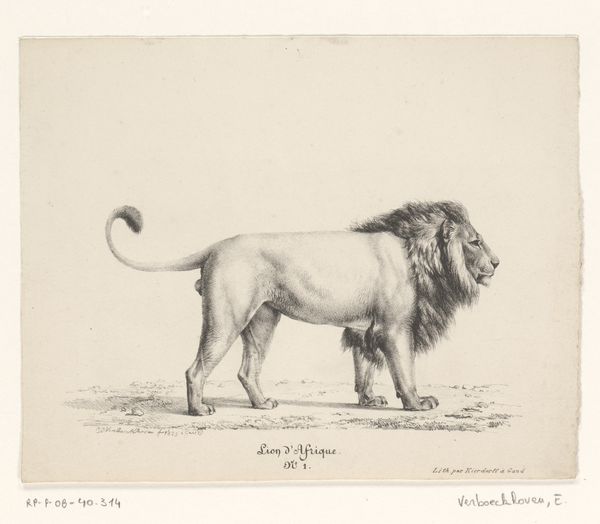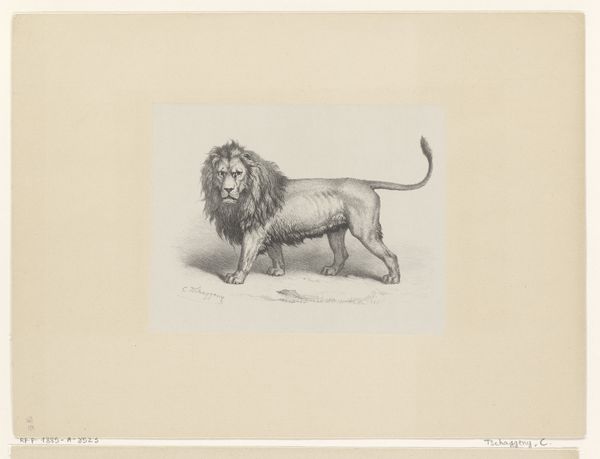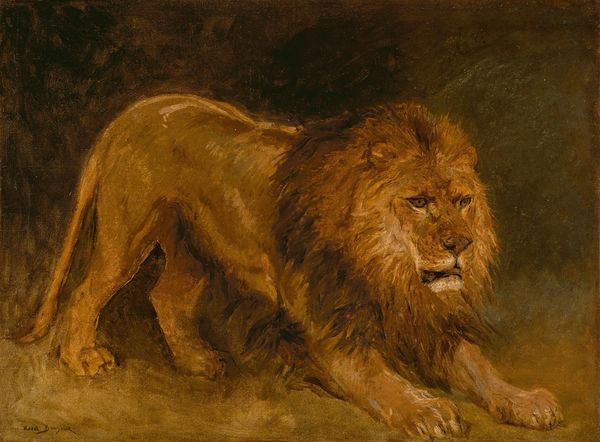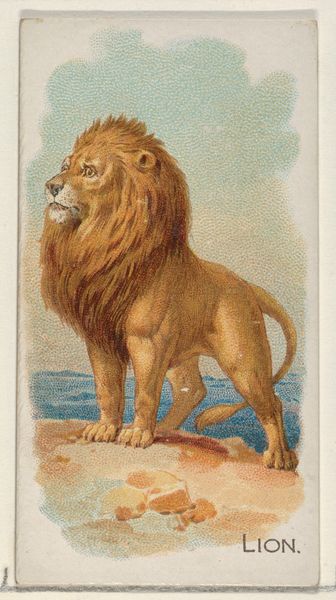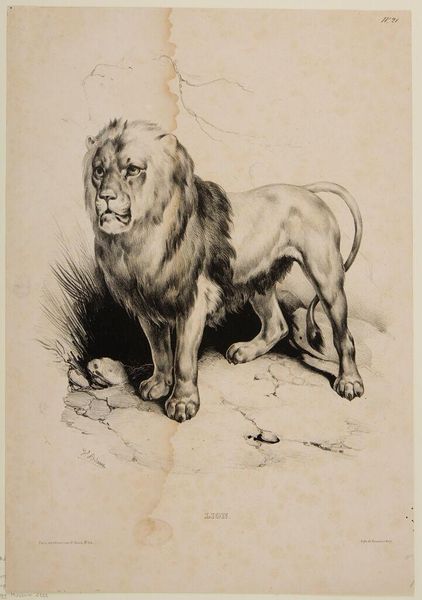
photography, gelatin-silver-print
#
portrait
#
photography
#
gelatin-silver-print
#
realism
Dimensions: height 230 mm, width 285 mm
Copyright: Rijks Museum: Open Domain
Curator: Let’s turn our attention to this gelatin silver print from 1880 by Thomas James Dixon titled "Lion in the London Zoo," currently held in the Rijksmuseum. It's a powerful image. Editor: It is, isn't it? My first impression is one of confinement. The lion looks incredibly majestic, but the bars behind it, while blurred, tell a different story. The starkness of its gaze coupled with those cage bars are striking. Curator: Precisely. Considering this photograph was taken in 1880, what does it signify about Victorian attitudes toward nature and empire? We see the lion, a symbol of power, literally caged, stripped of its agency, objectified for public consumption. Editor: Absolutely. The materiality of the gelatin silver print process itself is important here. This wasn’t some fleeting sketch. This was a relatively involved process. We need to think about the labor that went into making it – Dixon likely had a specialized setup and assistants. The materials reflect an early form of mass art production, this gelatin silver technology was pretty popular in the mid-late 1800’s so this lion probably had an audience beyond London, even. Curator: Indeed. Consider the socio-political implications. Lions were potent symbols in Victorian Britain, often associated with imperial strength. Capturing a lion, putting it on display—it's all part of the colonial project of dominating the natural world, transforming a majestic beast into an object of entertainment and perhaps a warning against rebellious peoples the British empire dominated. Editor: It speaks to a broader story of industrialization too. Even though the subject matter is "nature," there's something artificial about the scene. The perfectly flat, paved surface where the lion lies, the bars in the background; those are materials and settings that this animal wouldn't normally encounter in its natural environment. The consumption of raw materials enabled by colonial activity has left it… confined. Curator: So, in conclusion, this piece goes beyond a simple depiction of an animal. It acts as a looking glass, revealing the entangled relationship between power, representation, and domination in the Victorian era. Editor: For me, it underscores the way artistic materials can document, and perhaps even critique, a time of massive ecological and social upheaval during the industrial era, particularly when empires expanded across the planet to do so.
Comments
No comments
Be the first to comment and join the conversation on the ultimate creative platform.
